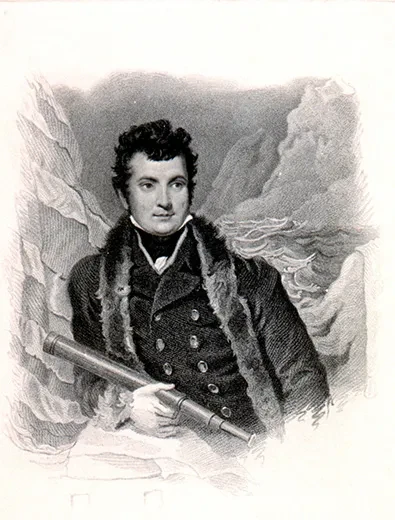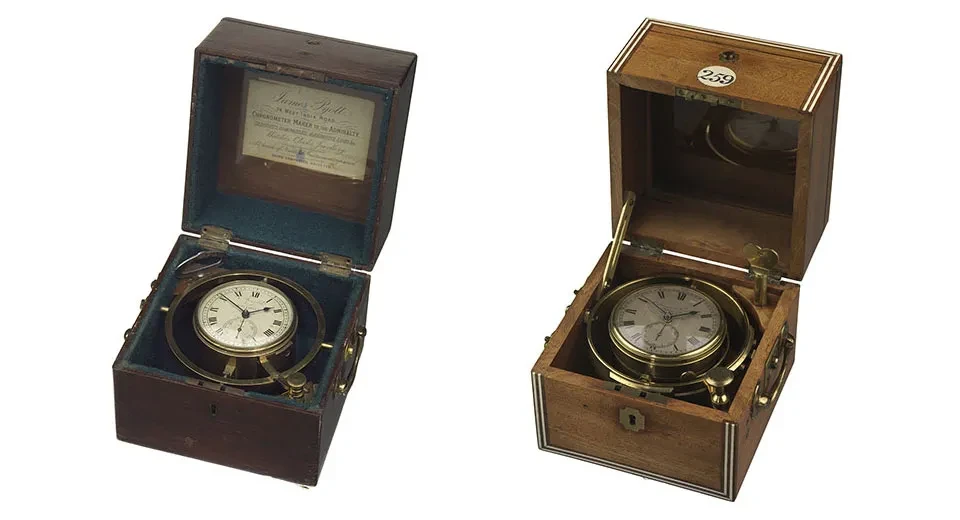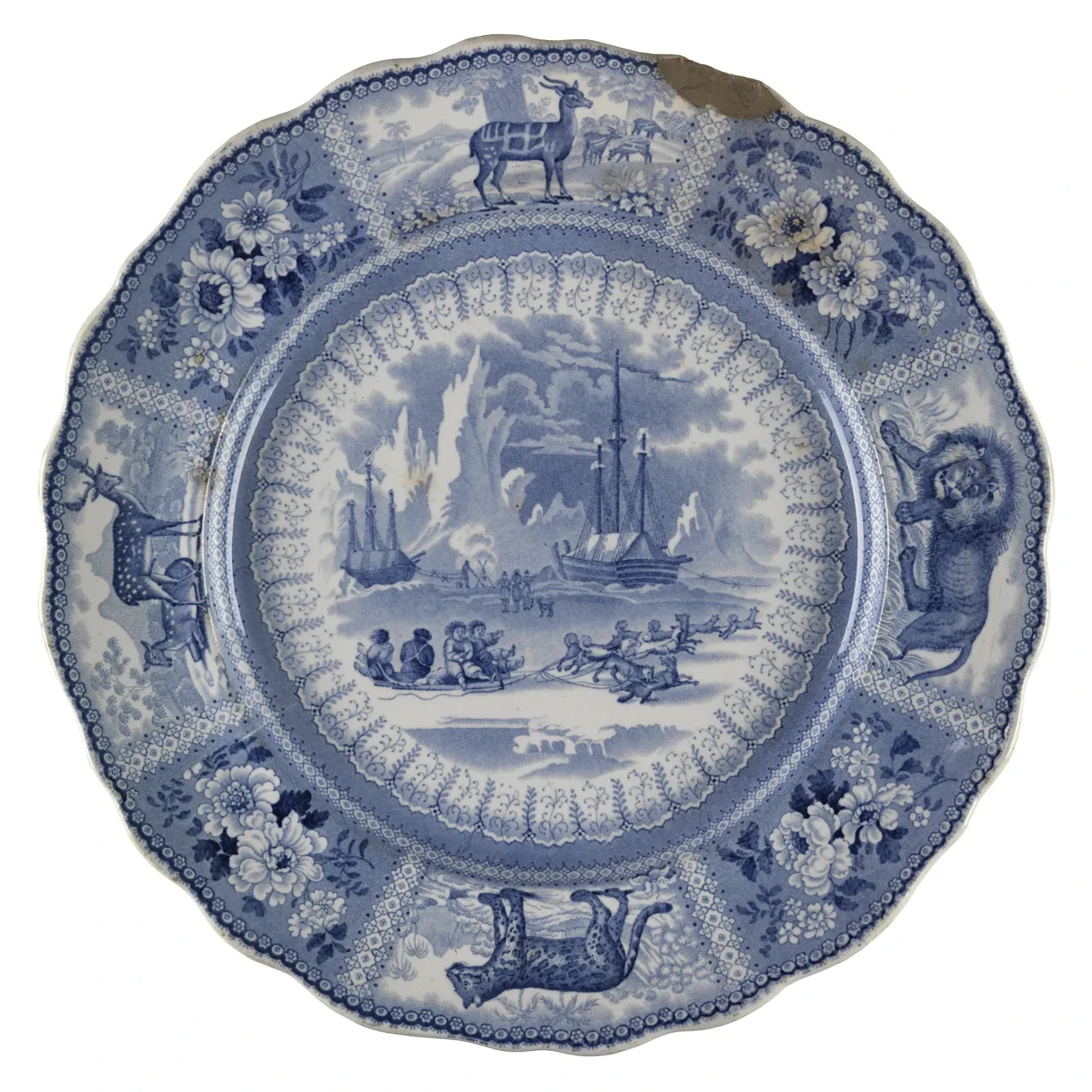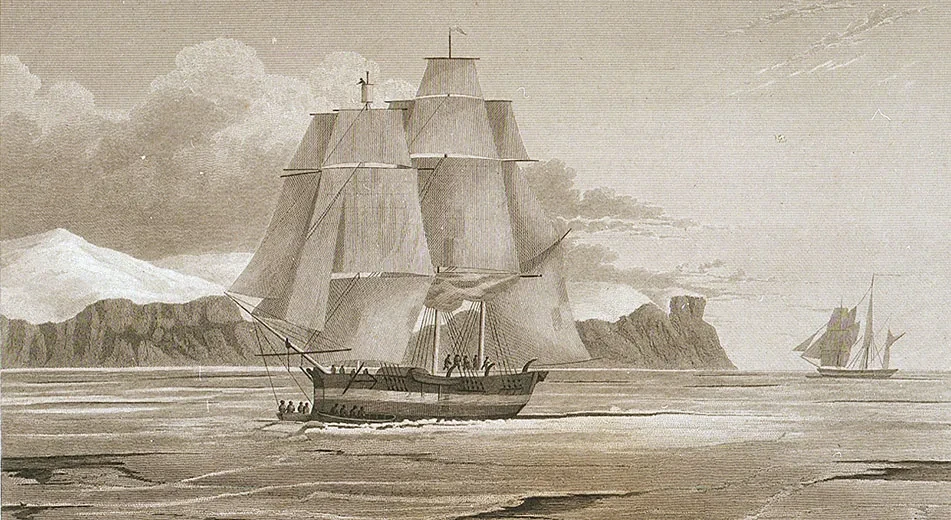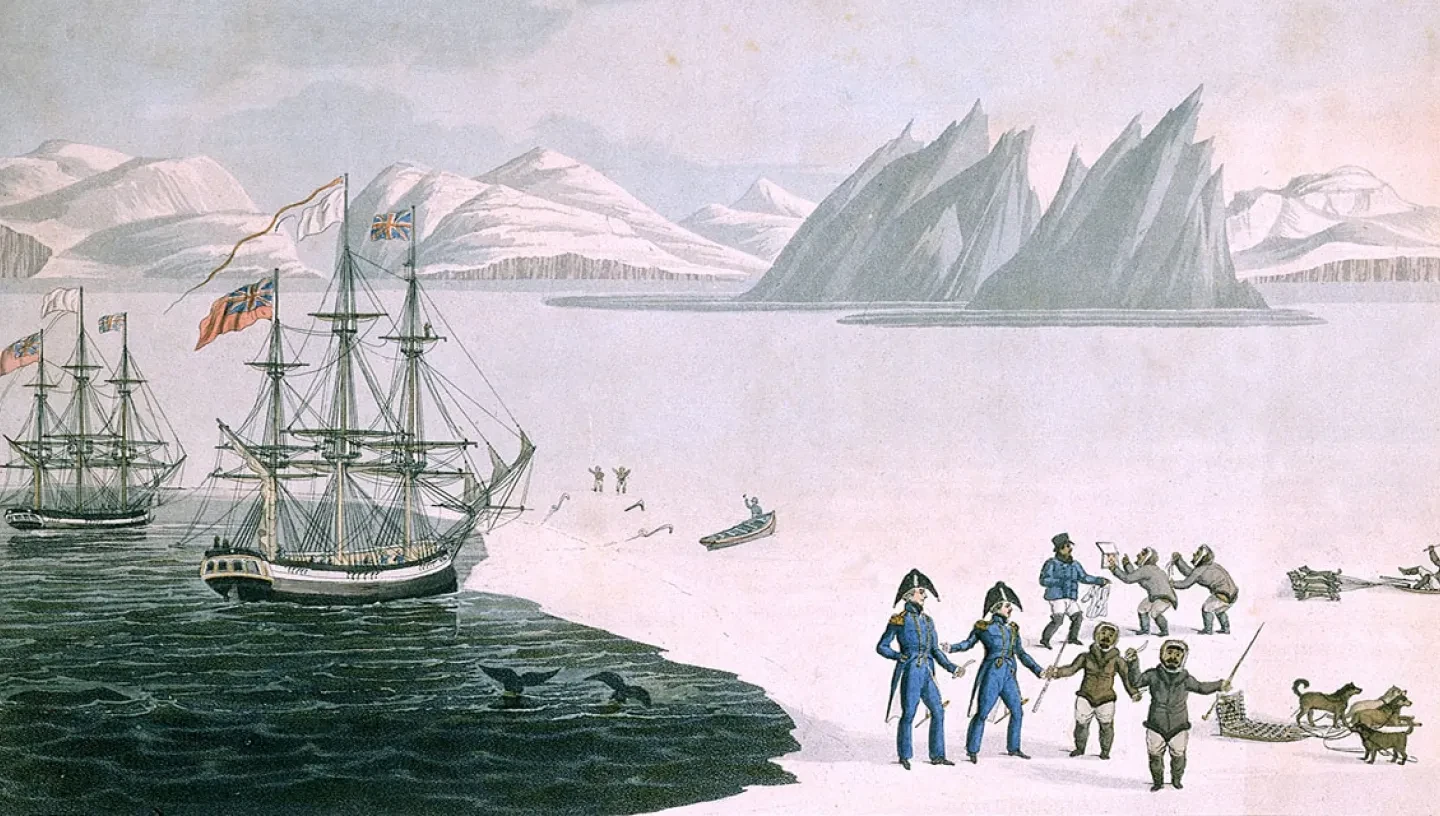
Researchers working under the explorer William Parry in the far North sought to uncover the mysteries of the Arctic, but extreme cold and bizarre magnetic effects interfered in their research more than they had anticipated.
The nineteenth century was a prolific time for Arctic exploration. Much of the Arctic was still uncharted and the magnetism of the Earth was poorly understood, so geographical surveying and magnetic investigation were key scientific objectives of many expeditions. One British explorer who ventured north in this era of discovery was William Edward Parry, who commanded HMS Alexander in 1818, accompanying Sir John Ross on HMS Isabella into the Arctic. Parry then led three further expeditions in 1819, 1821 and 1824.
These voyages were primarily in search of the North-West Passage, a potential trade route to Asia off the northern coast of North America, but researchers on board sought to determine the effects of extreme cold on various substances and animals, and to discover as much about the Earth’s then-mysterious magnetic field as possible. With average winter temperatures of -30°C, using and maintaining instruments designed for more moderate climates presented unexpected difficulties. Aside from temperature, the closer to the magnetic North Pole one gets, the stronger and more irregular the magnetic field, which interferes with ferrous components of instruments rendering their readings erratic and unreliable.
Arctic temperatures
Temperature changes affect the properties of materials. In scientific instruments built for precision, changes in physical properties can have major consequences for the operation of an instrument and its accuracy. Reverend George Fisher, an astronomer and researcher, worked under Parry on his 1818 and 1821 voyages. His journals detail some of the obstacles they encountered in their work as a result of the extreme Arctic cold.
A common problem with instruments with moving parts was stiffening at low temperatures. When discussing a repeating circle (an angle-measuring instrument) taken on the voyage, Fisher proposed that this stiffness arose from ‘unequal contraction of the centre work’ of the instrument and a ‘gradual accumulation of ice’ around the moving parts. Recording data requires the experimenter to keep time, but the clocks and chronometers regularly stopped due to the cold, often at around -3°F (-19°C). Stiffness of moving parts is common, and this is usually overcome with a lubricant. However, sassafras oil, which was often used, separated and froze in such low temperatures, leaving ‘a perfectly white chrystal’ and ‘another part of the oil which does not freeze at -26°[F, -32°C]’. Having noticed this property, Parry’s men dismantled and cleaned the frozen clock mechanisms and re-oiled the parts using this unfrozen part of the oil. Fisher noted that following this improvisation ‘the maintaining power increased, performed tolerably well at temperatures as low as about 10 degrees below zero, but at lower temperatures it stopt altogether’, at which point the clock had to be replaced with three pocket chronometers, which were constantly compared to minimise error.
When undertaking a geographical survey, it is vital that angles are correctly measured relative to the horizontal or vertical. Instruments were usually fitted with their own spirit levels, in which a vial of fluid with an air bubble is used to assess horizontality. According to Fisher’s journals, these levels were badly affected by the cold. Low temperatures cause a liquid to contract, which increases the viscosity (or thickness) of the fluid in the vial. This increased viscosity meant that the movement of the bubble was ‘sluggish’ and less sensitive. Small changes in angle may not have registered due to this resistance to movement, and any changes that could be registered would take longer to show. This contraction also reduced the volume of the fluid, which in turn enlarged the bubble. This was so extreme in some cases that ‘the extremities of the bubble would not be visible’, rendering the level completely useless, as the edges of the bubble were needed to judge when the instrument was correctly levelled. Even if the edges of the bubble were still visible, the change in the length of the bubble would affect readings taken. If the length of the bubble is not consistent for every reading, the readings are much harder to compare. Fisher acknowledged this in his notes but decided that ‘it nevertheless seems proper […] that the values […] should be determined solely by the extent of the bubble’.
Edward Sabine, an Irish astronomer and geophysicist on Parry’s 1819 expedition, describes a system to counter the effect of the cold on the level of one particular instrument. In a memorandum to an expedition journal, Sabine writes that they drew ‘heated air in a tin tube fitted beneath the level […] furnished with a chimney to carry off the air’. This addition ‘delayed the enlargement of the bubble beyond the scale for upwards of a quarter of an hour at a very low temperature’. However, despite the success of this adaptation, that particular instrument was hardly used. The solution to the problem with the level couldn’t offset the stiffness and ice build-up.
Peculiar magnetism
Magnetic compasses are known to be highly unreliable and even misleading in Polar regions. Compasses point to the magnetic North Pole, which is located in the Arctic. However, the Magnetic North and Geographic or ‘true’ North Poles are not at the same point. The angular distance between these two norths is known as magnetic variation. Magnetic variation changes over time and relative to location, which was understood at the time of Parry’s voyages and could, with care, be accounted for. Another major factor affecting compasses’ reliability is deviation. Magnetic deviation describes the disturbance caused by local magnetic fields from bodies such as ships, mountains and iron deposits. In Parry’s time, the effects of magnetic deviation were acknowledged, but deviation itself and its causes remained uncertain. There were attempts to make compasses which were insulated from local magnetism but still responded to global magnetism (something we now understand to be impossible), and a number of these were taken on the 1818 Arctic expedition, but these proved unsuccessful.
Forces and fields can be resolved into their horizontal and vertical components. Near the magnetic poles, the vertical component becomes much greater than at lower latitudes where the horizontal component dominates. This leads to needles or cards in compasses being pulled downwards towards the ground, getting caught or dragging instead of turning freely in the horizontal plane. Parry’s men noted that at times compasses needed constant tapping or shaking to be made to respond.
Chronometers were also affected by magnetic influences. Parts of their inner workings were often made of steel, and exposure to strong magnetic forces could cause irreversible damage, affecting the reliability of the instrument. The problem was not that a chronometer was gaining or losing time; if the rate of a chronometer was known, then it could be compensated in calculations. Rather, the problem was that the magnetic effect made rates inconsistent. A chronometer gaining or losing time irregularly cannot be predicted or accounted for, which affected how reliable the readings were.
Further reading:
‘Magnetism and chronometers: the research of the Reverend George Fisher’, G. W. Roberts, British Journal for the History of Science, 42(1), 2009
C.W.J. Withers and F. MacDonald (eds.), Geography, Technology and Instruments of Exploration (Ashgate, 2015)
By Heather Bennett, Research Intern
